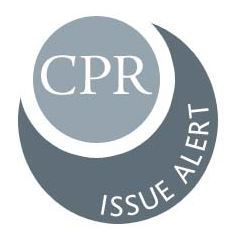 As soon as next week, the Obama Administration is expected to release the final version of its long-awaited Clean Power Plan, an ambitious regulatory package under the Clean Air Act’s provisions that will ultimately reduce greenhouse gas emissions from power plants, the largest single source of U.S. emissions. In a new issue alert, a distinguished group of 11 Center for Progressive Reform Member Scholars, all law professors who are experts in a variety of energy and environmental topics, identify a number of key issues likely to determine the success of the plan.
As soon as next week, the Obama Administration is expected to release the final version of its long-awaited Clean Power Plan, an ambitious regulatory package under the Clean Air Act’s provisions that will ultimately reduce greenhouse gas emissions from power plants, the largest single source of U.S. emissions. In a new issue alert, a distinguished group of 11 Center for Progressive Reform Member Scholars, all law professors who are experts in a variety of energy and environmental topics, identify a number of key issues likely to determine the success of the plan.
“With the Clean Power Plan, the Obama Administration is finally confronting emissions from our existing energy infrastructure,” said CPR Member Scholar and coordinating editor Alice Kaswan in releasing the issue alert. “If it sticks to its guns, it can put the United States on a course to meaningful reductions in greenhouse gas emissions, thus enabling our transition to a cleaner energy future and helping the U.S. assert more compelling international leadership on climate change. If it crumbles under political pressure, this chance won’t come again for this President, and we will only prolong the emissions that are progressively increasing our collective risk. The success of the plan in reducing emissions and facilitating a clean energy transition is not a foregone conclusion; EPA’s final policy choices will be critical.”
The paper points to a number of key issues to watch once EPA releases the Clean Power Plan and proposed federal implementation plan, offering insights on what to look for in the plan and on how states should implement it, including:
- Will the Administration weaken the plan by making significant concessions to industry and political pressure? Will it extend compliance periods significantly? Make major revisions in the “building blocks” that shape state targets?
- Will the final CPP embrace or hinder existing regional agreements that rely on cap-and-trade? Will the final Clean Power Plan retain or improve the incentives for states to cooperate with each other to develop and submit regional compliance plans?
- Within cap-and-trade programs, will EPA allow states to use offsets or allowances representing reductions from non-electricity sources to comply with state targets?
- Will the final CPP set or allow preferable mass-based state targets, or will it retain rate-based targets? Will the states retain flexibility to use either form?
- Will the state targets continue to reflect states’ past efforts, with the states that have done the least being expected to meet weaker targets and the states that have done the most being expected to meet more stringent targets?
- What will be the environmental justice implications of the CPP and CPP implementation options, particularly with respect to co-pollutants?
- How will states react to the final CPP? Will state governments refuse to participate in developing state implementation plans (SIPs), as Sen. Mitch McConnell has urged, even though they will then be subject to a federal implementation plan that could have the effect of limiting their input into regulation of their state’s power systems?
- Will the states and others challenge the constitutionality of the CPP and the legality of its systemwide approach to reducing existing emissions, despite legal justification in support of the approach?
- Will states draft state implementation plans that prioritize renewables and energy efficiency, or choose less environmentally sustainable options like carbon capture, nuclear, and natural gas?
The contributing authors of The Clean Power Plan: Issues to Watch, are all CPR Member Scholars.
“This paper leverages the deep expertise of CPR’s Member Scholars to examine the Clean Power Plan from a variety of vantage points,” said CPR President Robert R.M. Verchick, a former Deputy Associate Administrator for Policy at EPA during the early years of the Obama Administration. “No matter what the final rule looks like, we can be certain that industry will decry it as a disaster for their bottom line, and that the partisans will say it’ll break the nation’s energy system. They’ll be wrong, but they won’t miss the chance to predict disaster. The truth is that comprehensive action by the federal government on climate change — real action — is long overdue. But the details of this plan — the dates, the targets, the tools — will make all the difference.”
Center for Progressive Reform
www.progressivereform.org
Filed Under: News, Policy




